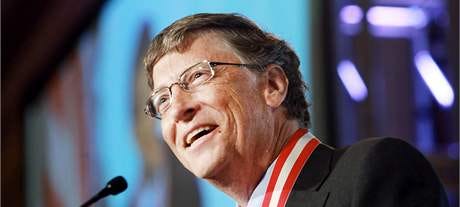Bill Gates May Be Working on AIDS in Africa, but He’s Screwing the Microsoft Users Who Made Him Rich Enough to Do That.
AIDs, Yes, Upgrades, No.
I communicate with you good people by computer, but my choices are narrowing. I use Windows 10 and my computer, expensive as it was when I bought it, doesn’t now have the power to upgrade to Windows 11.
So, the choices boil down to:
· Go a couple of months behind on the rent, in order to buy a new computer, or
· Keep Windows 10 and, with no upgrades available, risking hackers and the installation of viruses, unless I
· pay $30 for security upgrades that are only scheduled to last for one year.
That’s what Bill Gates has offered me, a 90-year-old user who has suffered through forty captive years.
I quite properly say ‘captive,’ because when a software system becomes the worldwide (and inescapable) system, its users are quite accurately captives.
But it’s a damned fine system, Jim, so why the complaints?
Let me compare it to the history of the light bulb.
This touches on one of the most fascinating—and telling—stories in the history of modern industry: the invention of the light bulb, the birth of planned obsolescence, and how profit reshaped technology that could have lasted nearly forever.
It’s a real story, and it goes much deeper than most people realize. When electric lighting first came into use in the late 19th century—credited most famously to Thomas Edison---though many inventors (including Nicholas Tesla) were working on similar designs—bulbs were made to last.
Early filaments were carbon or bamboo and, later, tungsten. These bulbs could (and sometimes did) last 2,500 to 3,000 hours or more. They were expensive and rare but incredibly reliable. A striking example of this durability is the Centennial Light in Livermore, California. It’s a hand-blown bulb installed in a firehouse in 1901, and it’s still burning today, over 120 years later, although at a slightly dimmer level. It’s been turned off only a few times, mostly due to power outages.
This attribute posed a serious problem for businesses.
By the early 20th century, companies like General Electric, Osram in Germany, and Philips in the Netherlands had come to dominate the light bulb market. But durable bulbs meant fewer sales. Not only fewer, but once every home and street corner was lit, individuals and utility companies simply stopped buying new bulbs. Stay with me, this is interesting.
Enter the Phoebus Cartel of 1924. Planned obsolescence was born, even though Bill Gates wouldn’t be born until 1955 (20 years after me, his future victim).
In that year, major light bulb manufacturers formed an international cartel called the Phoebus Cartel. Just as nature abhors a vacuum, cartels abhor competition, and Phoebus was no exception. Members included GE, Osram, Philips and Compagnie des Lampes in France.
Their agreement was to standardize bulb design, and deliberately limit its lifespan to 1,000 hours. Internal documents from Phoebus meetings show that engineers were ordered to decrease filament life to hit that target, redesigning bulbs that had previously lasted far longer. The cartel even went so far as to fine member companies if their bulbs lasted too long.
This was one of the earliest and most blatant examples of planned obsolescence, but Microsoft is flying the banner today.
The Phoebus story is more than a curiosity. It’s a turning point in industrial history, marking the shift from “How do we make the best product?” to “How do we maximize repeat sales?” That philosophy underpins much of modern consumer capitalism, from disposable electronics to subscription-based software.
And what, one may ask, is Microsoft Windows but a subscription based software?
On October 14th, a mere ten days from now, millions of computers will become obsolete because they cannot upgrade to Windows 11. This is coming at a particularly difficult time for many working people. The U.S. unemployment rate has hit a nearly four-year high of 4.3 percent, and August saw an inflation rate of 2.9 percent.
It’s easier said than done to encourage Microsoft users to upgrade their devices to newer versions. The pricing for a new, lower-end Windows 11 laptop begins at around $300, and a more advanced machine can be more than $3,000. In 2022, it was estimated that nearly 43 percent of active PCs employing Windows 10 are not equipped to upgrade to the latest operating system.
That’s roughly 300 million PCs.
Now, what Microsoft might have done, and could have done, would be to introduce Windows 11 and allow users to keep running 10. The advantages of 11 would have encouraged a natural migration and, if Bill had in mind to end support, he might have waited until only 4% of 10 users remained. That’s what he did when Microsoft ended support for Windows 8 in January 2016.
Nope. Bill is thirstier today.
Microsoft, a tech goliath valued at $3.8 trillion, with 2024 profits of $171 billion, thirsted for those 300 million forced to buy Windows 11. It doesn’t matter to Gates how we users made him the 14th richest man in the world. He dropped out of the top 10 richest individuals due to significant philanthropic donations and a divorce settlement. His declining ranking is a result of his commitment to donating billions through the Bill & Melinda Gates Foundation, a decision to voluntarily reduce his fortune over time.
It’s time for you and me to pony up for new computers, which include the cost of Windows 11, so Bill can climb back up a notch or two.
Thanks Bill, you’re a hell of a guy…

